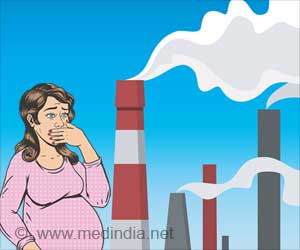New study finds that growing corn accounts for 4,300 premature deaths related to air pollution every year in the United States.

‘Corn production accounts for thousands of premature deaths related to air pollution each year in the United States. A new study suggests strategic interventions in maize production, including replacing the fertilizer type and application technique, improving nitrogen use efficiency, and shifting to crops requiring less fertilizer.’
Read More..




Corn is a key agricultural crop used for animal feed, ethanol biofuel, and human consumption.Read More..
The paper presents how researchers have estimated for the first time the health damages caused by corn production using detailed information on pollution emissions, pollution transport by wind, and human exposure to increased air pollution levels.
The study also shows how the damage to human health of producing a bushel of corn differs from region to region and how, in some areas, the health damages of corn production are greater than its market price.
"The deaths caused per bushel in western corn belt states such as Minnesota, Iowa, and Nebraska tend to be lower than in eastern corn belt states such as Illinois, Indiana, and Ohio," said lead researcher Jason Hill, associate professor at the University of Minnesota College of Food, Agricultural and Natural Resource Sciences.
Researchers, including UMN professors Stephen Polasky, applied economics; Timothy Smith, bioproducts and biosystems engineering; David Tilman, College of Biological Sciences; teaching assistant professor Natalie Hunt and doctoral graduate student Sumil Thakrar, bioproducts and biosystems engineering; and scientists at other institutions, used county-level data on agricultural practices and productivity to develop a spatially explicit life-cycle-emissions inventory for corn.
Advertisement
Increased concentrations of fine particulate matter (PM2.5) are driven by emissions of ammonia a PM2.5 precursor that result from nitrogen fertilizer use. Average health damages from reduced air quality are $3.07 per bushel (56.5 lbs.) of corn, which is 62 percent of the $4.95 per bushel average corn market price of the last decade. This paper also estimates life-cycle greenhouse gas emissions of corn production, finding total climate change damages of $4.9 billion, or $0.38 per bushel of corn.
Advertisement
In addition to changing the fertilizer type and application method, the study's results suggest potential benefits from strategic interventions in corn production, including improved nitrogen use efficiency, switching to crops requiring less fertilizer, and changing the location where corn is grown.
Aware that changes in practices can take time and planning, Hill suggests farmers could be offered incentives to switch to crops that demand less applied nitrogen while still offering market and nutritional benefits.
"Not only are ammonia emissions from fertilizer damaging to human health, but they are also a waste of money for farmers because they are not getting the benefit of the nitrogen that they're paying for," Hill said. "The number of deaths related to corn production could be reduced through these key tactics."
Source-Eurekalert













